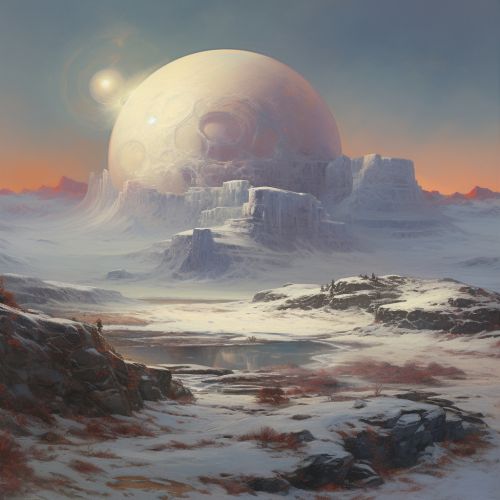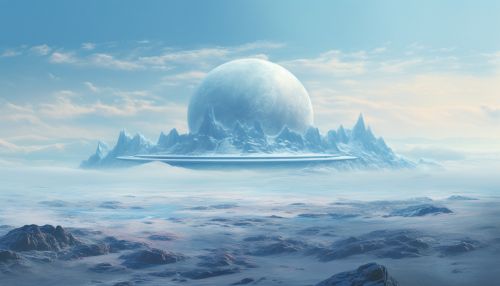Ice cap
Introduction
An ice cap is a mass of ice that covers less than 50,000 km2 of land area (usually covering a highland area). They are dome-shaped and thus spread out from their center. Ice caps are found in both the Arctic and Antarctic regions, as well as in several high mountain areas on Earth.
Formation
Ice caps form primarily from snow that accumulates over many years, which eventually transforms into ice. The process begins with the accumulation of snow, which is compacted under its own weight and gradually turns into firn, a granular type of snow. Over time, the firn is compressed into ice as more and more snow accumulates on top. This process, known as nivation, can take hundreds to thousands of years.


Characteristics
Ice caps have certain distinct characteristics that set them apart from other types of ice formations. They are smaller than ice sheets, which cover more than 50,000 km2 of land area. Ice caps also have a dome shape, which allows them to spread out from their center, and they are usually found in highland areas.
Ice caps are also characterized by their movement. The ice in an ice cap flows outward from its center, driven by the weight of the overlying ice. This flow is known as ice cap flow, and it is a critical aspect of the ice cap's dynamics.
Impact on Global Climate
Ice caps play a significant role in the Earth's climate system. Due to their high albedo, or reflectivity, they reflect a large amount of sunlight back into space, which helps to cool the Earth. This is known as the albedo effect. However, as ice caps melt due to global warming, this reflective surface decreases, leading to more sunlight being absorbed by the Earth and further warming.
Ice caps also act as vast reservoirs of freshwater. When they melt, they contribute to sea level rise, which is a major concern in the context of global warming.
Ice Caps and Sea Level Rise
When ice caps melt, they add large amounts of freshwater to the world's oceans. This can contribute to sea level rise, a major concern in the context of global warming. According to the Intergovernmental Panel on Climate Change (IPCC), melting ice caps and glaciers are currently the largest contributors to sea level rise.
Ice Caps and Ecosystems
Ice caps also play a crucial role in local ecosystems. They provide a habitat for a variety of organisms, including several species of polar bears, seals, and penguins. These species have adapted to the harsh conditions of the ice cap environment and rely on the ice for hunting, breeding, and resting.
Threats to Ice Caps
The primary threat to ice caps is global warming. As the Earth's temperature rises, ice caps are melting at an unprecedented rate. This not only contributes to sea level rise but also threatens the habitats of the many species that depend on the ice caps for survival.
Other threats to ice caps include pollution and human activity. For example, black carbon, or soot, from industrial processes and the burning of fossil fuels can darken the surface of ice caps, reducing their albedo and causing them to absorb more heat.
Conservation Efforts
There are several ongoing efforts to conserve ice caps and mitigate the effects of their melting. These include efforts to reduce greenhouse gas emissions, which are the primary cause of global warming, as well as efforts to reduce pollution and manage human activity in ice cap areas.
